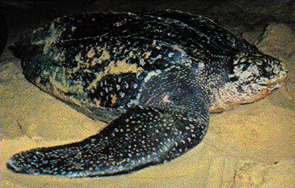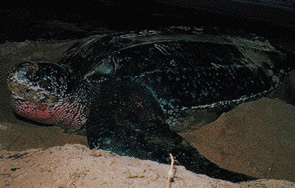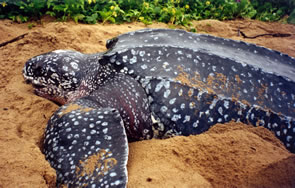
Leatherback
Dermochelys coriacea
Description: The leatherback is the largest living turtle in the world. Seven longitudinal ridges can be found along the carapace, with five similar ridges on the plastron. The turtle's shell is covered by a smooth skin, instead of the fragmented scutes found on most turtles. Skin color ranges from black to dark blue, with occasional patches of white or pink. Their flippers are very large and lack claws. The loggerhead measures between 53 and 70 inches (135-178 cm) in carapace length and weighs 650 to 1200 lbs (295-544 kg).
Feeding/Diet: This species feeds almost exclusively on jellyfish.
Activity/Behavior: Leatherbacks have a unique ability to maintain their internal body temperature much higher than the surrounding water; therefore they can tolerate a wide range of temperatures. For this reason many are found far offshore.
Habitat/Range: Leatherbacks can be found in any salt water environ.
Reproduction: Leatherbacks are known to nest on the coast of Florida and sometimes, though rarely, Georgia. Females nest between April and July and usually lay 80-85 eggs.
Miscellaneous: Leatherbacks are considered endangered by the U.S. Fish & Wildlife Service and are protected by law.

The shaded region represents the range of the leatherback sea turtle in North Carolina.
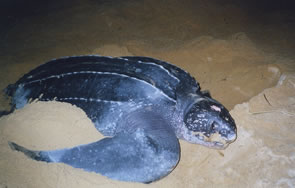
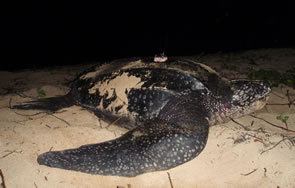
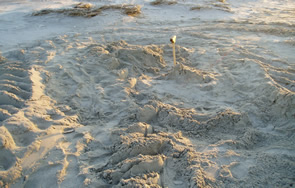
Photo by L. King
